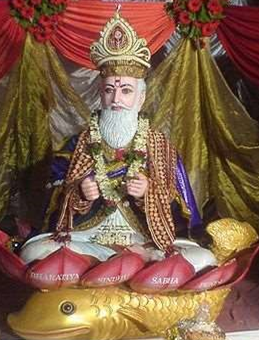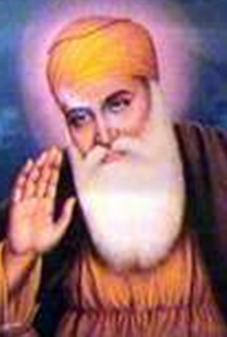Talk:Saguṇa Brahmaṇ as Avatāra (or Vibhava):Avatāras of Various Devas and Liberated Souls
By Sri Vishal Agarwal
I. Avatāra-s of Viṣṇu
Amongst the primary Forms of Īśvara, the incarnations of Bhagavān Viṣṇu are most commonly known and recognized. The reason for this is that Viṣṇu is the ‘Preserver of the Universe’ aspect of Īśvara. Therefore, He descends in a physical form from time to time to restore the balance when dharm and its adherents have been undermined severely.
Viṣṇu has innumerable incarnations, but the 10 major Avatāra-s of Viṣṇu are enumerated as:
- Matsya (Fish)
- Kūrma (Tortoise)
- Varāha (Boar)
- Narasiṃha (Half Lion – Half Man)
- Vāmana (Dwarf)
- Parśurāma (Rāma with the Axe)
- Rāma
- Kṛṣṇa
- Buddha (in some lists, replaced by Balarāma)
- Kalki (in the future)
The Avatāra-s of even male Deva-s are not restricted to a specific gender. For example, one of the Avatāra-s of Viṣṇu is a beautiful lady named Mohinī. Moreover, as stated earlier, Viṣṇu often incarnates together with His consort, Lakṣmī.
Sometimes, several saints are said to be Avatāra-s of earlier Avatāra-s. For example:
- The followers of Śrī Caitanya Mahāprabhu believe that the Mahāprabhu was the Avatāra of Kṛṣṇa for this age. [1]
- Swāmī Nārāyaṇa (Sahajānanda Svāmī, 1781–1830 CE) is considered a manifestation of Nārāyaṇa or Kṛṣṇa by the followers of the Swāmī Nārāyaṇa Sampradāya.
- Assamese Vaiṣṇava-s believe that Saint Śaṅkaradeva [2](1449–1568 CE) was an incarnation of Kṛṣṇa.
- In the tradition of Śrī Vaiṣṇava-s of South India, the twelve Āḻvār-s and numerous later saints are considered incarnations of objects associated with Viṣṇu such as the Śaṅkha, Cakra, and Ghanta.
II. Avatāra-s of Śiva
Some schools of people, like the Śaiva Siddhānta, believe that Śiva never incarnates by taking birth in the home of human parents, although He appears in a body to save His devotees.
Other people (e.g., Smārta-s) believe that Śiva does incarnate just like Viṣṇu. In general, it is fair to say that Śiva typically does not incarnate[3] but appears to His devotees either in person, in their dreams, or in the form of His iconic symbol – the Śivaliṅga.
Numerous sites spread all over the Indian subcontinent where Bhagavān Śiva appeared in the past are marked by famous temples.
III. Avatāra-s of Devī
In the scriptures (e.g., Devī Bhāgavata Purāṇa) of the Śākta the Devī graces the earth with numerous incarnations in which she is born in pious households.
Example: Her birth as Satī in the household of Dakṣa.
IV. Avatāra-s of Gaṇapati
In scriptures like the Mudgala Purāṇa, many incarnations of Gaṇeśa are also counted.
V. Avatāra-s of Other Devatā-s
Other Devatā-s are also said to have taken Avatāra-s. Examples:
- Vāyu was incarnated first as Hanumān, then as Bhīma, and finally as Madhvācārya (13th cent. CE) according to the theology of the followers of Dvāita Vedānta.
- Sindhi people believe that Sant Jhūlelāl was an Avatāra of Varuṇa Devatā. He saved them from forced conversion to Islam in the 11th century CE and is still worshipped along with the Indus River, traditionally associated with Varuṇa.
- The great Sanskrit grammarian Patañjali is regarded as an Avatāra of Śeṣa. So are:
- Balarāma - Lakṣmaṇa - Rāmānuja (1017–1137 CE) - Nityānanda Prabhu (associate of Caitanya Mahāprabhu)
- The lady saint Antaḷ is considered an incarnation of Bhūdevī (Earth).
VI. Avatāra-s of Liberated Souls
Śāstras also declare that souls that have attained mokṣa and been liberated from the cycle of births and deaths can, of their own will, take birth again out of compassion to guide others on the spiritual path.
This birth of the liberated souls is purely voluntary, unlike that of non-liberated souls which is caused by unexhausted karm. Such souls, being one with Brahman, may have their Avatāra-s likened to Brahman Itself incarnating.
Examples include:
- The followers of Sāṅkhya Darśana believe that Sage Kapila was one such soul who created a body for himself to teach his philosophy through his disciple Āsuri.
- The liberated sage Apāntaratamas took birth as Veda Vyāsa to compile the four Veda-s, the Mahābhārata, the Purāṇa-s, etc. [4]
- Early Sikh traditions state that none other than King Janaka of Videha (celebrated philosopher-king in Hindu texts) was reborn as Guru Nānak.
- Sai Bābā of Śirḍī (d. 1915) is said to have been a realized and liberated soul. Some people believe he was reborn as Sathya Sai Bābā (1926–2011), and will take one more birth in the near future.
- Some scholars (e.g., of the Ārya Samāj) believe that Kṛṣṇa Himself was one such liberated soul and interpret Gītā 4.7–8 in this light.
Of course, all people do not believe in all of these Avatāra-s, but generally do not disrespect them and often revere them as saints even if not as Divine Avatāra-s.
References[edit]
- ↑ It should be noted however that the followers of Chaitanya Mahaprabhu consider Krishna as the Supreme Godhead, higher than even Vishnu. For his biography, refer to Steven Rosen (1988).
- ↑ For his biography, refer to Sanjib Barakoti (1974).
- ↑ Adi Shankarāchārya is regarded as an Avatāra of Shiva by many followers of Advaita Vedanta. The purpose of this Avatāra was to check the growth in the influence of the heretical Buddhist doctrine.
- ↑ See traditional commentaries on Brahmasūtra 3.2.32



